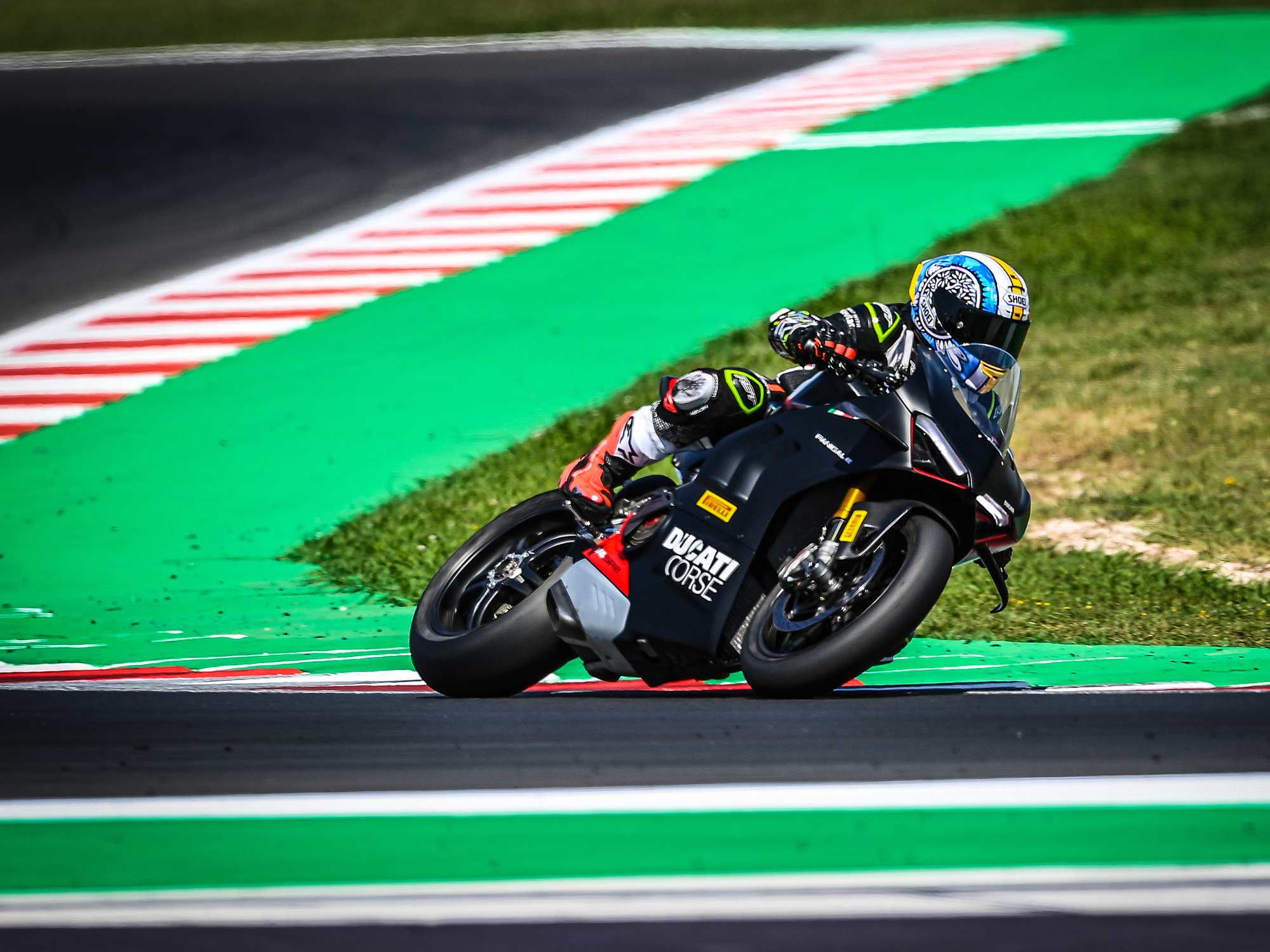
Ducati has always made its SPs truly special. From the 851 through the 916 to the V4 Panigale, they’re the poster bikes for successive generations of the marque’s superbikes. And this updated Panigale V4 SP, the SP2, will make even the coldest, most clinical hearts not only beat faster but lap faster.
Unlike previous SPs, this mid-season update is not about churning out the 500 production units necessary to meet homologation rules for World Superbike. It couldn’t; it runs an ineligible 1,103cc power unit, for starters. This is about bringing the SP into line with the 2022 Panigale V4 and V4 S. Both of these received updates this year that, somewhat bizarrely, meant the cheaper bikes made more power than Ducati’s “ultimate track machine.”
So now the SP2 catches up. There’s a 1.5 hp increase with four riding modes, Street, Sport, Race A, and Race B. There’s an STM-EVO dry slipper clutch that sounds incredible and a lighter 520 chain. There’s an option for a titanium Akrapovič exhaust system that increases power by 12.5 hp while trimming 11 pounds from the SP2′s overall mass. Suspension, too, is aligned with that of the new V4 S, meaning Öhlins Smart EC 2.0 electronic control system with an Öhlins NPX 25/30 fork and TTX 36 shock at the rear.
At 381 pounds (dry), the SP2 weighs the same as the original SP and is just 2.2 pounds lighter than the V4 S. But the ounces shaved are done so in critical areas, with the goal of making a Ducati V-4 that’s even easier to ride blisteringly fast on track. There’s more carbon fiber; the front mudguard, for example, which alongside the older SP’s carbon rims further reduces unsprung mass compared to the V4 S. There’s also a revised tank, and the riding position has been changed for V4 S this year. The aero winglets are redesigned for less drag compared to last year’s SP, and there’s an evocative Winter Test livery to help the SP stand out from the red V4 S crowd.
Ducati gave testers a session on the Misano racetrack on a standard V4 S before swapping them to the SP2. There was no time to warm up, so it was straight into a hot lap. Taking the bike on track in Race B mode seems the best option, basically putting the engine on medium heat, with restricted torque in the lower gears. The engine maps are essentially the same as those on the standard models, and previous experience indicates Race A and full power is a little too aggressive, especially on a scorching day at Misano.
That said, even when this bike is not up to speed and being short-shifted at around 12,000 rpm, well before the redline, it’s still arm-ripping quick. Once again it has demonstrated how it takes a while to recalibrate to riding any Panigale V4, let alone an SP.
After a lap or two to tune in, it’s a tap down on the butter-smooth quickshifter, get the revs singing, and, wow, the SP2 delivers. Now with less unsprung and rotational mass, the SP2 accelerates even faster, so much so that Ducati has been forced to recalibrate the V4′s excellent electronic rider aids. Straight-line speed isn’t a massive jump over the standard, but is noticeable when riding both bikes back to back. Some may have expected more power from the SP2, but unless you’re Danilo Petrucci doing your thing in AMA Superbike, it’s simply not required.
On paper, the separation between the SP2 and the standard V4 S isn’t as significant as the difference between the Streetfighter SP and Streetfighter S, which on track proved to be around two seconds. In back-to-back private testing, Ducati test rider Alessandro Valia was one second faster on the SP, and as the V4 S and the SP2 use the same engine, the difference in lap times is purely down to handling.
Objectively, it is hard to criticize the standard V4 S, as Ducati’s recent improvements have made a significant improvement. But the changes to the SP2 put this Panigale on another level. The speed at which it turns, especially during fast direction changes, and the accuracy of its line just takes this motorcycle into a class of one.
In the very fast fourth- and fifth-gear turns toward the end of the lap, the SP2 could carry more corner speed every time, pinging from apex curb to exit curb and back to apex curb with such precision that it was no more than a few millimeters different each lap, despite doing over 150 mph.
The first section of Misano is ultra-technical, and all about clipping false apexes, letting the bike drift wide, then pulling it back into the corner proper. Clean exits are vital, none more so than the one out of turn 6. Again, the SP2 felt easier to manage than the V4 S; it could be allowed to flow and run over the curb on the exit with confidence. The V4 S isn’t hard work, far from it, but 20-minute sessions chasing racebikes in scorching Italian heat, riders on the SP2 had more in reserve, lapping at the same speeds with less effort. Much of the credit must go to those lighter wheels, which save some 3 pounds in unsprung mass over the V4 S’s forged items.
Some credit also goes to the revised riding position, which positions the body more in the bike and more behind the fuel tank rather than over the fuel cap. The tank itself is wider, allowing a rider to feel better supported as well as more relaxed. It’s also worth mentioning the adjustable pegs, which can be positioned slightly higher than standard for an increase in clearance allowing the bike to carry a fraction more corner speed and keeping toes clear of the tarmac when riders are too tired to move them out of the way. The grip and feel of the pegs are also improved over standard; now you can really push through the pegs with confidence, as it feels like your toes are clipped in with bicycle clips.
Like the older SP, the SP2 uses Brembo Stylema R four-piston radial front brake calipers and 330mm discs and is supported by Bosch cornering ABS Evo. At the rear there’s a 245mm disc with a twin-piston caliper, again with cornering ABS.
It might not seem there would be that much difference between the Stylema Rs and the V4 S’ Stylema items, which are incredibly strong. But the difference is noticeable, and might in part be down to the SP’s lighter carbon wheels.
The standard V4 S stoppers are not inconsistent, but the R stoppers felt identical each lap, the pressure and stopping power required precisely the same on lap 1 and lap 15, despite the blistering heat and punishment. There is a lovely feel and one-to-one connection with the stoppers, and the remote span adjuster is a nice touch; lever position was easy to adjust while trundling out of pit lane. Even on track at speed the lever can easily be adjusted with the left hand while accelerating on the throttle with the right.
The electronics are the same as the V4 and V4 S but recalibrated to compensate for a bike that will accelerate and decelerate quicker. The package includes Bosch Cornering ABS Evo, Ducati Traction Control (DTC) Evo 3, Ducati Wheelie Control (DWC) Evo, Ducati Slide Control (DSC), and Engine Brake Control (EBC) Evo among the rider aids, as well as Ducati Power Launch (DPL) and Ducati Quick Shift (DPS) up-and-down Evo 2.
The SP2 also comes equipped with the GPS-based Ducati Data Analyzer+ module stored in the rear single seat. This unit can track your lap times with accuracy and display each lap very clearly using the Track Evo display, which is derived from the one used in MotoGP. Lap times appear at the same point each lap; once back in the pits riders can flick through the screen to compare their best lap times. Constantly chasing lap times and using the rider aids to boost performance turns the SP2 into an arcade game, if a fast, expensive, and physical one.
Verdict
The standard V4 and V4 S are both excellent. They produce the same power and are arguably already leaders in the superbike class. But the SP2 is another step up. It’s not a huge step, but this bike is certainly more track-focused than the standard models and can lap a racetrack quicker and with less effort. The lighter carbon wheels, already present on the 2021 SP, make the largest difference: The bike is easier to ride at speed than the V4 S and turns faster and with more accuracy. The Stylema R brakes are a small improvement, as are the multi-adjustable pegs. A remote brake span adjuster, milled levers, and GPS module are also details that start to add up.
Ducati claims this is the Ultimate Racetrack Machine, and it is about right.
2022 Ducati Panigale V4 SP2 Technical Specifications and Price
| PRICE | $39,500 |
| ENGINE | 1,103cc, liquid-cooled, 90-degree V-4; 4 valves/cyl. |
| BORE x STROKE | 81.0 x 53.5mm |
| COMPRESSION RATIO | 14.0:1 |
| FUEL DELIVERY | Fuel injection w/ ride-by-wire |
| CLUTCH | STM-EVO dry slipper clutch; hydraulic actuation |
| TRANSMISSION/FINAL DRIVE | 6-speed/chain |
| FRAME | Alloy front frame |
| FRONT SUSPENSION | 43mm Öhlins NPX 25/30, Öhlins Smart EC 2.0 electronic fully adjustable; 4.9 in. travel |
| REAR SUSPENSION | Öhlins TTX 36, Öhlins Smart EC 2.0 fully adjustable; 5.1 in. travel |
| FRONT BRAKES | 4-piston Brembo Stylema R calipers, dual semi-floating 330mm discs w/ cornering ABS Evo |
| REAR BRAKE | 2-piston Brembo caliper, 245mm disc w/ cornering ABS Evo |
| WHEELS, FRONT/REAR | Carbon; 17 x 3.5 in. / 17 x 6.0 in. |
| TIRES, FRONT/REAR | Pirelli Diablo Supercorsa; 120/70-17 / 200/60-17 |
| RAKE/TRAIL | 24.5°/3.9 in. |
| WHEELBASE | 57.8 in. |
| SEAT HEIGHT | 33.5 in. |
| FUEL CAPACITY | 4.5 gal. |
| CLAIMED DRY WEIGHT | 381 lb. |
| WARRANTY | 24 months |
| CONTACT | ducati.com |
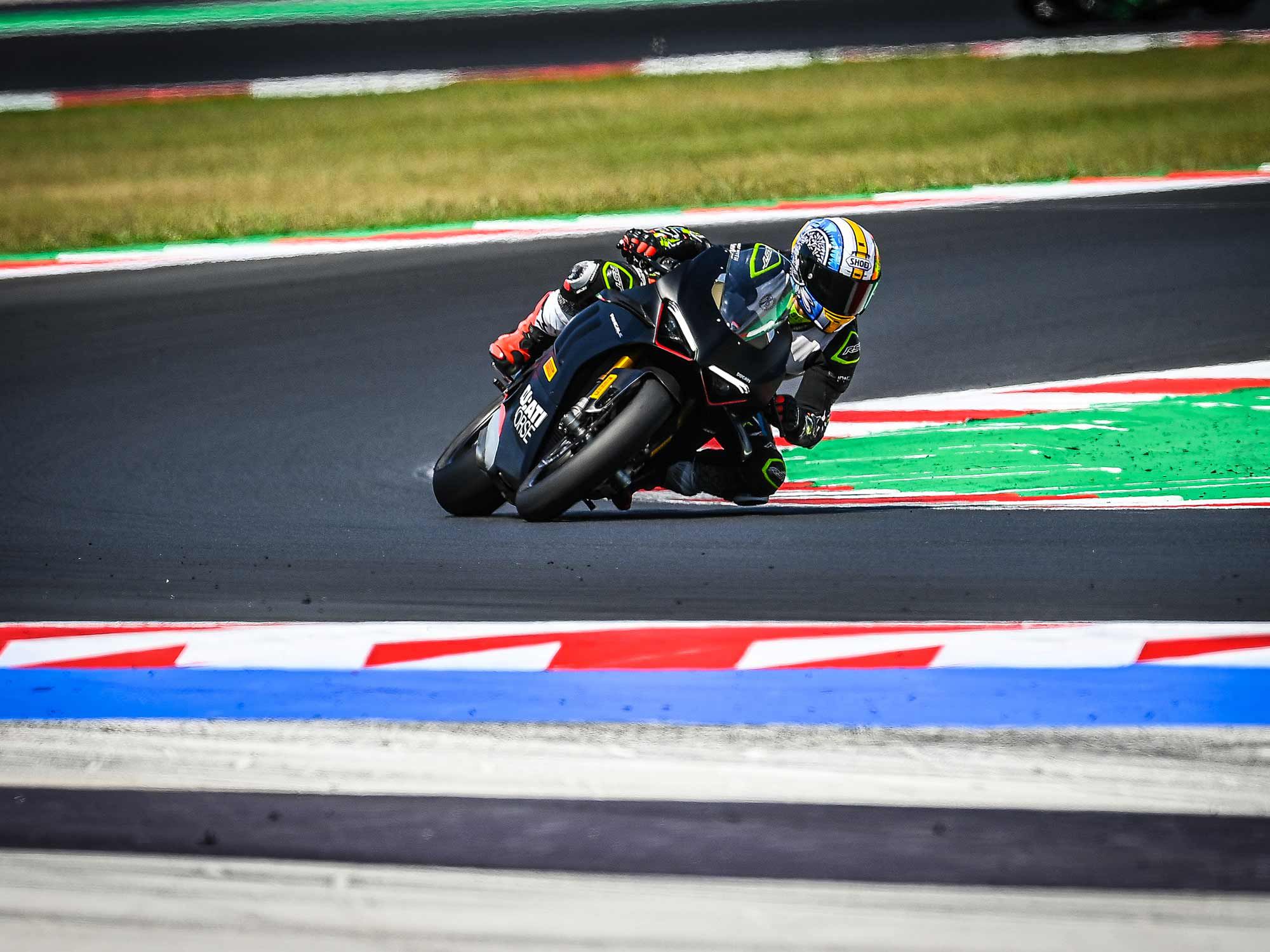
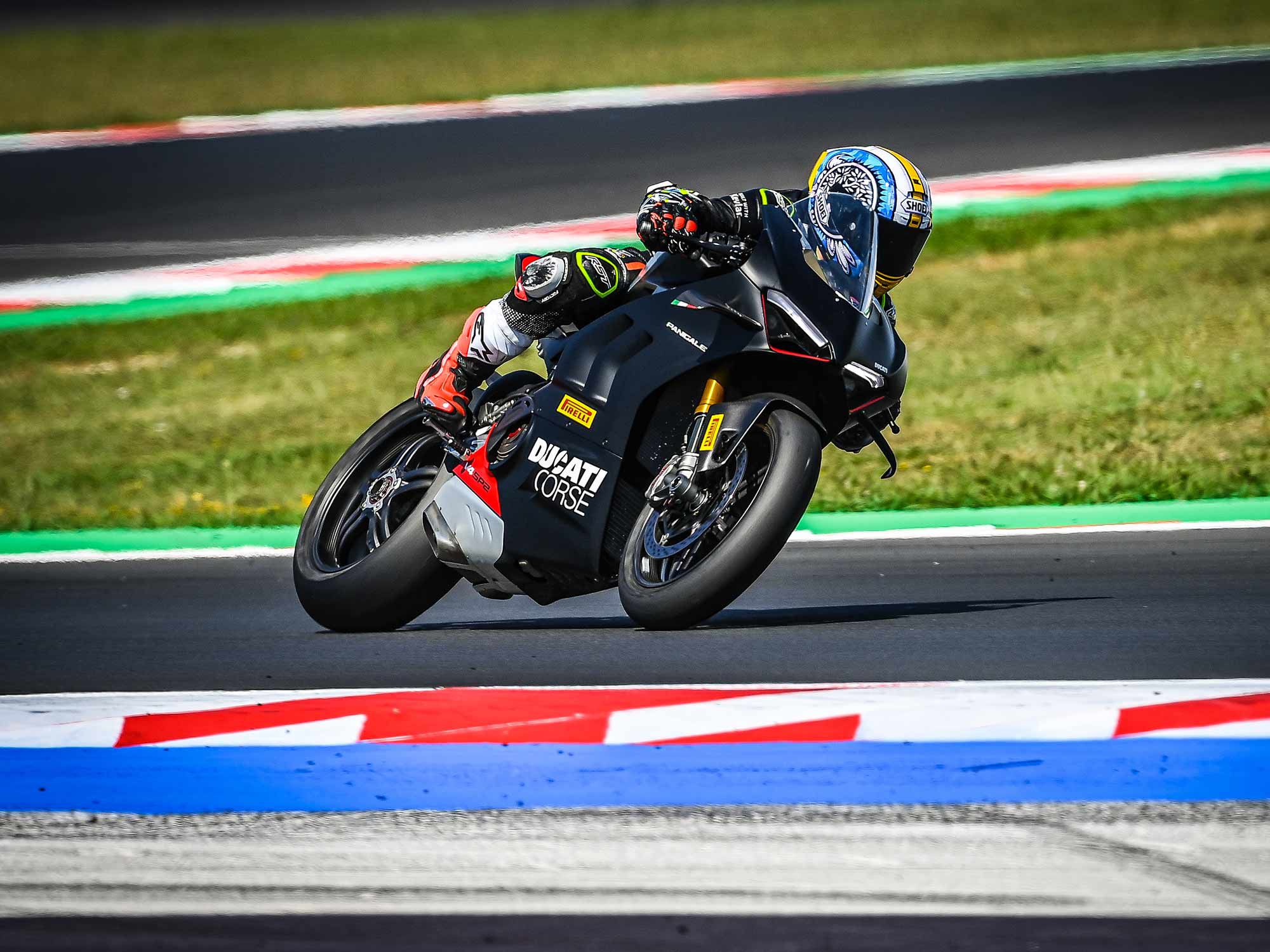
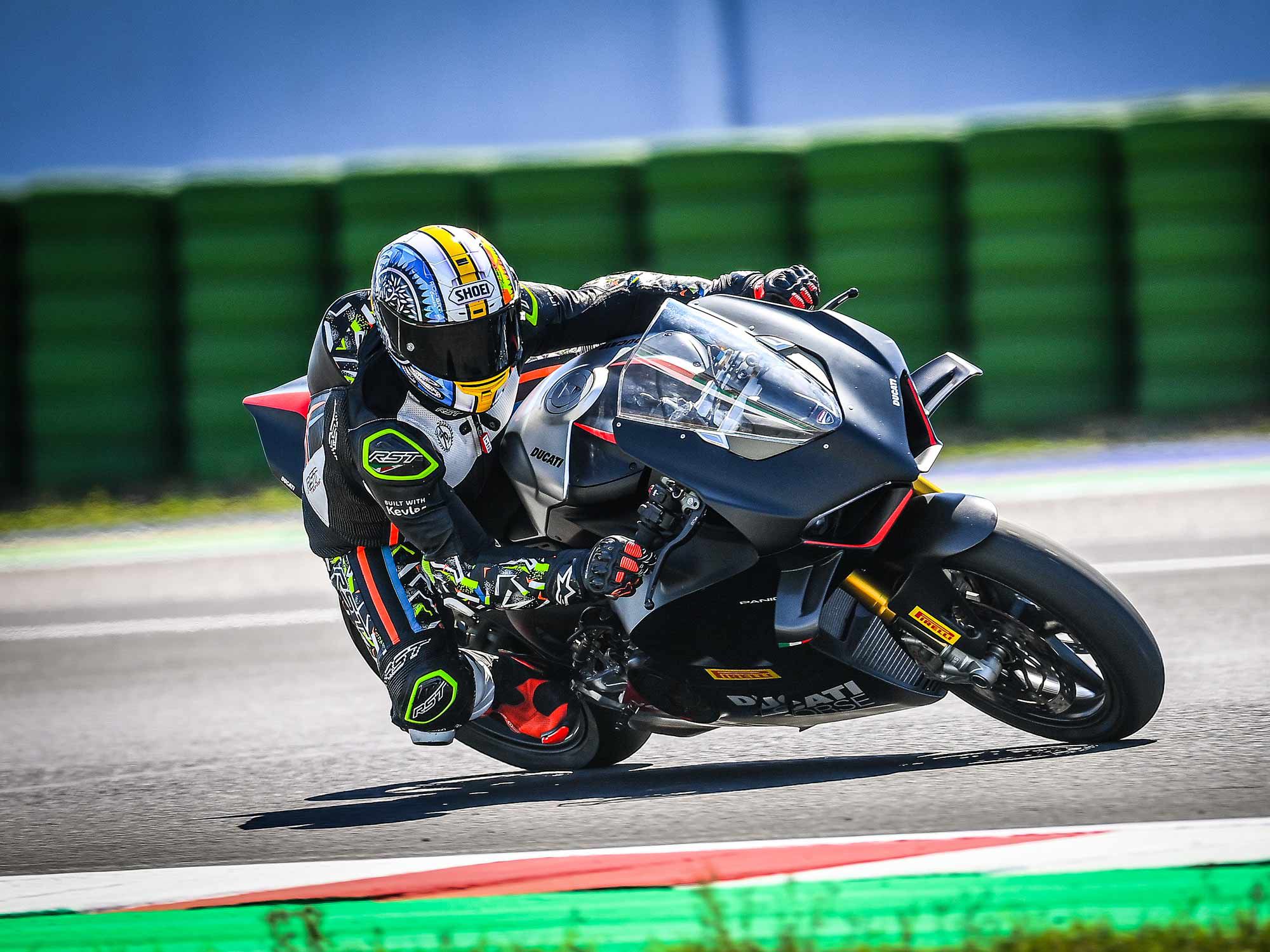
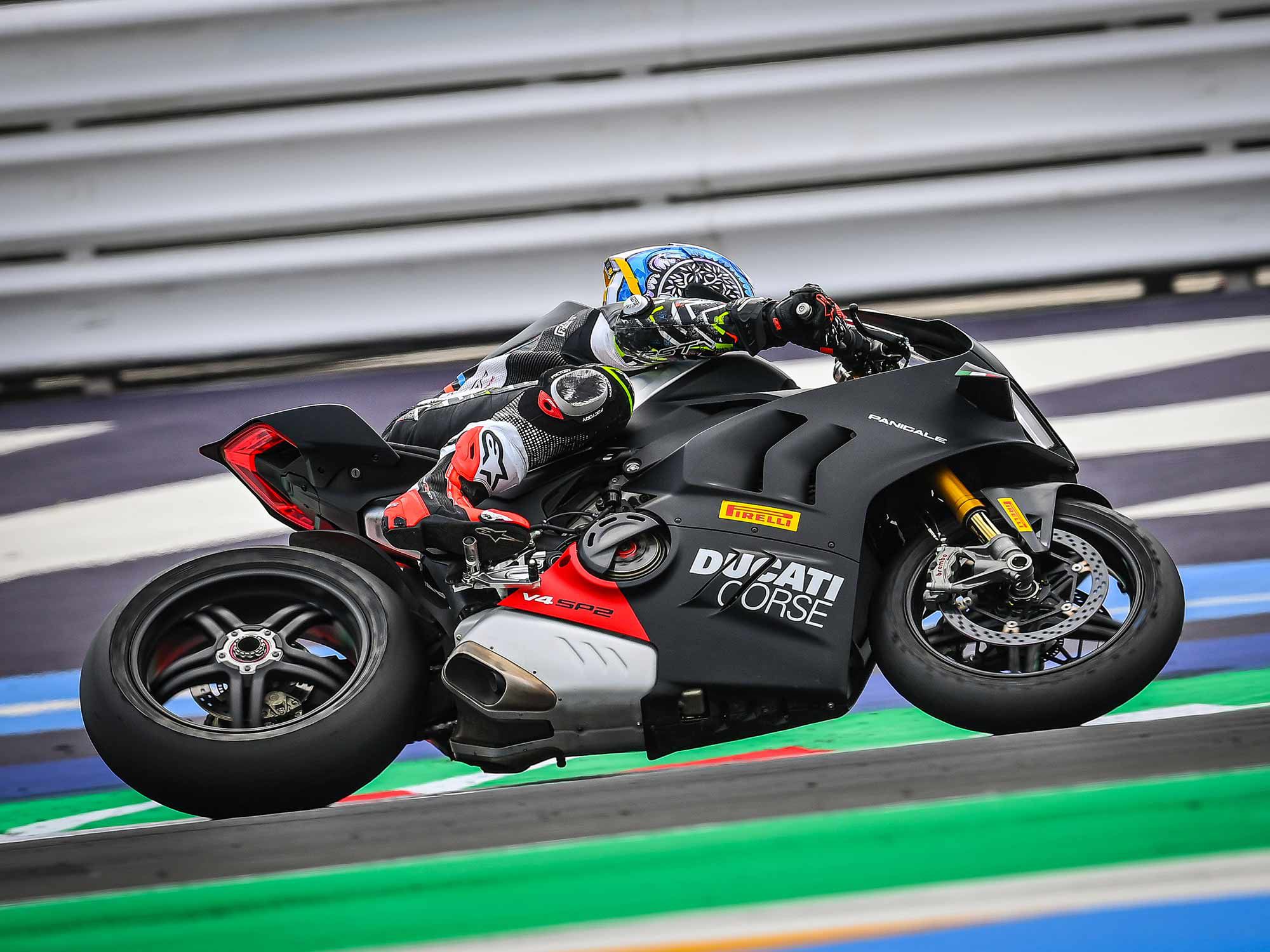
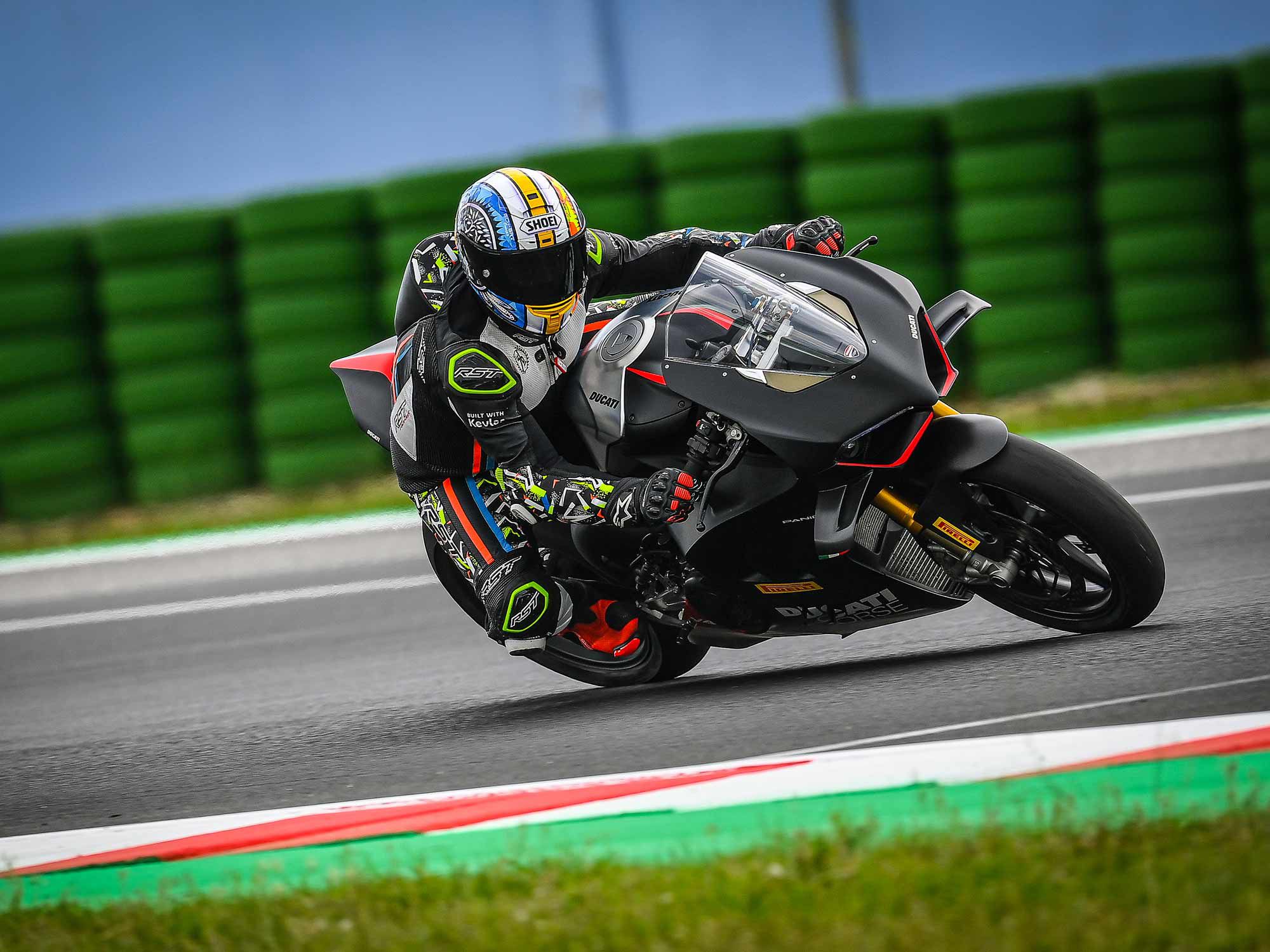
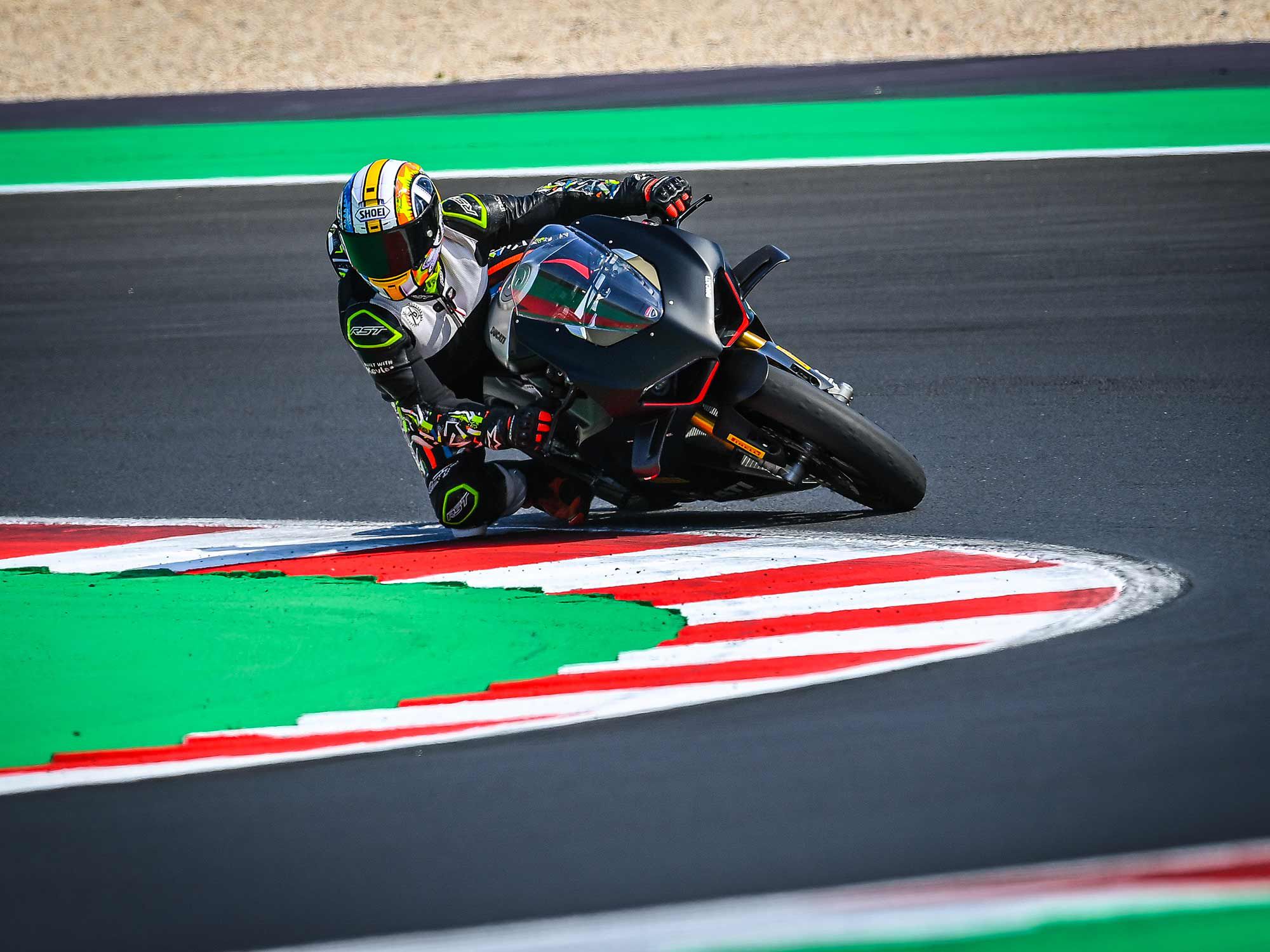
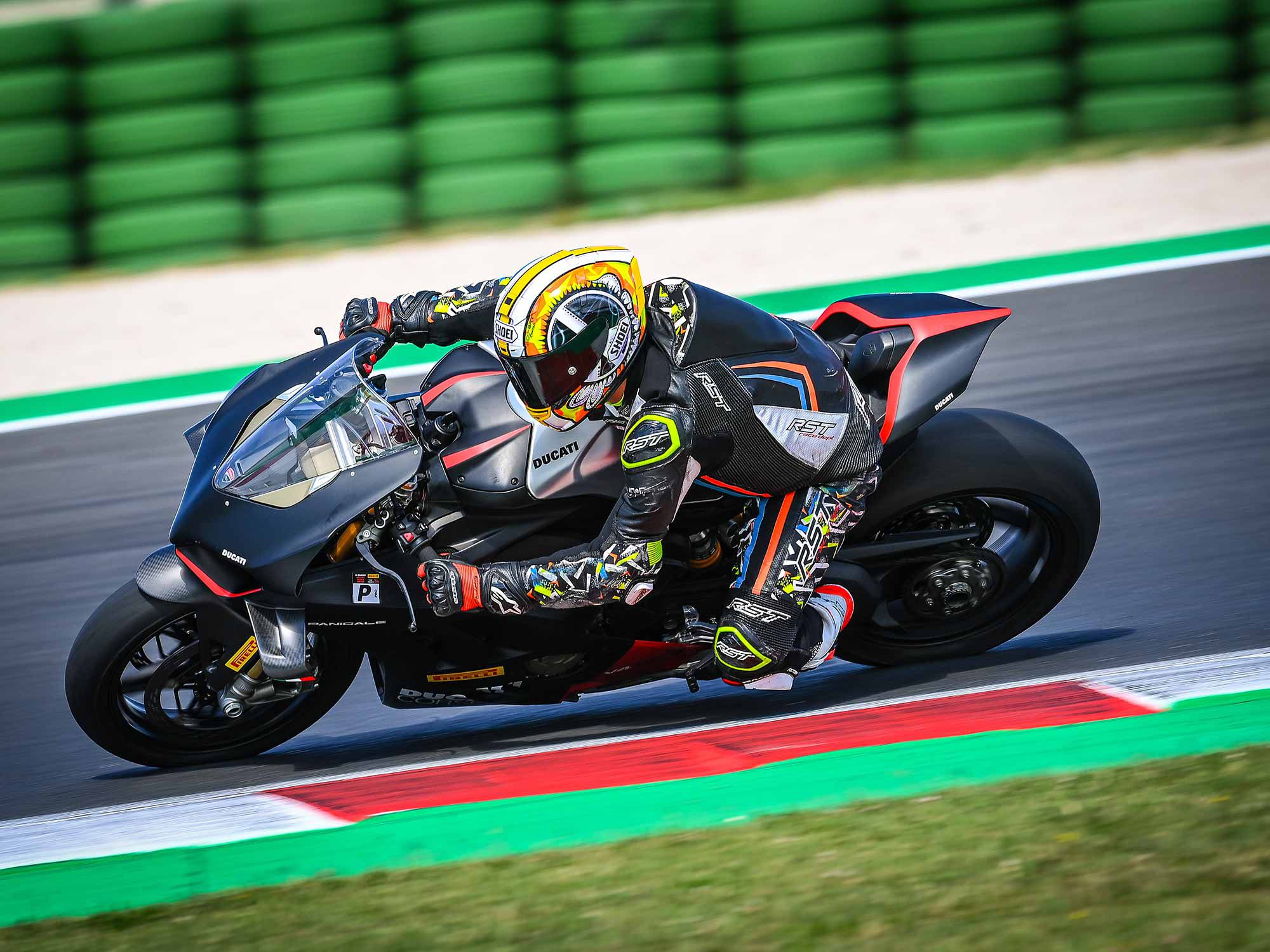
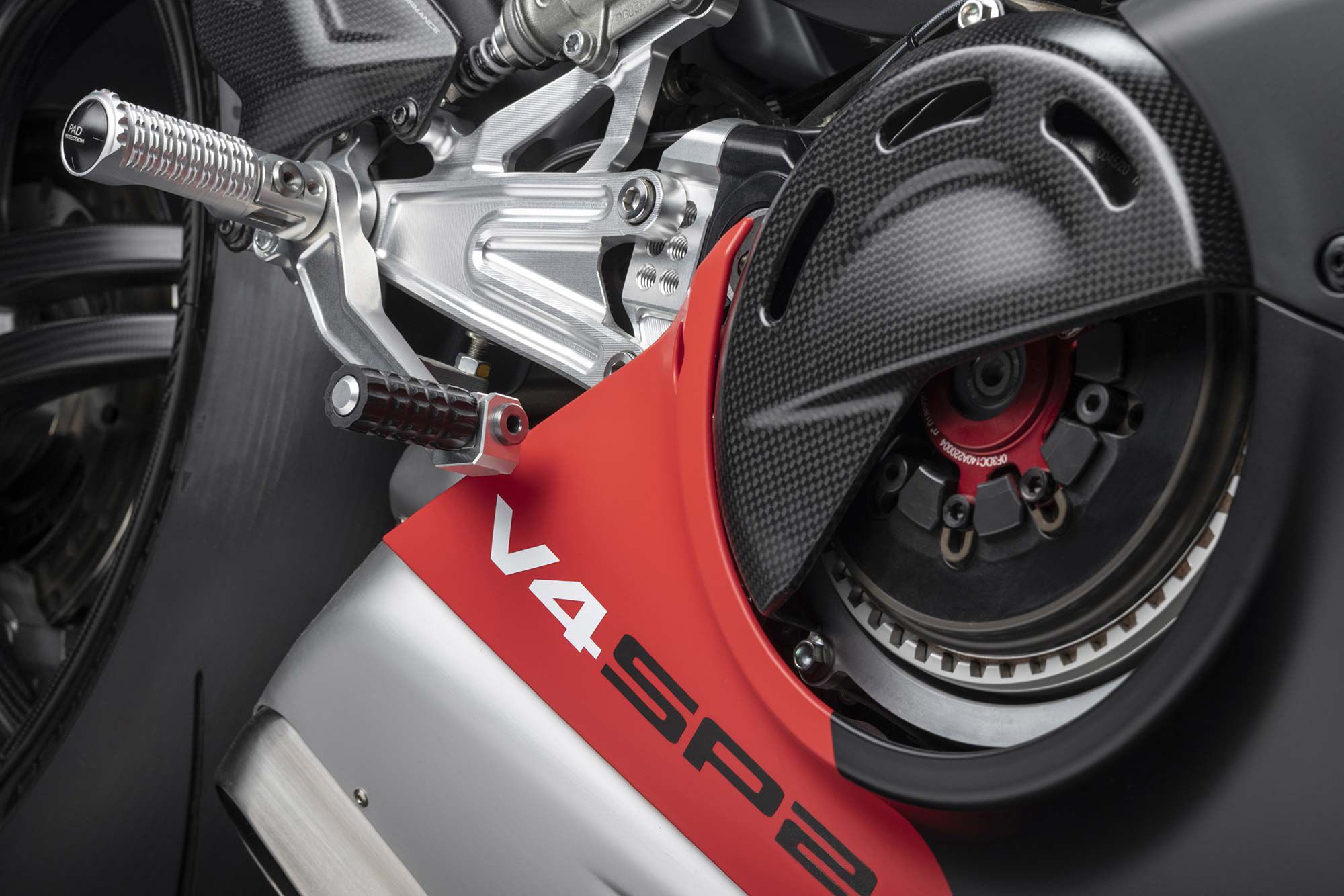
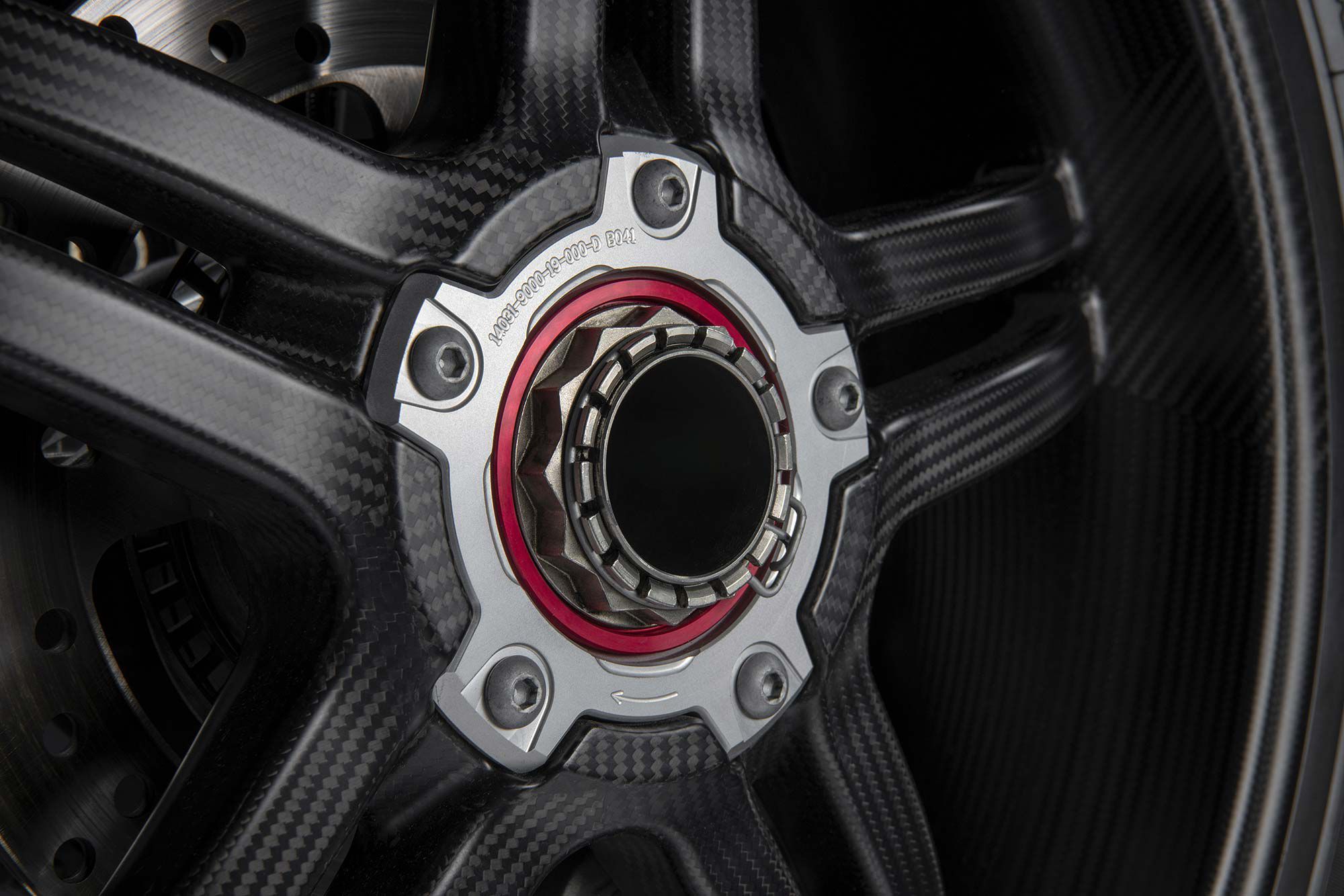
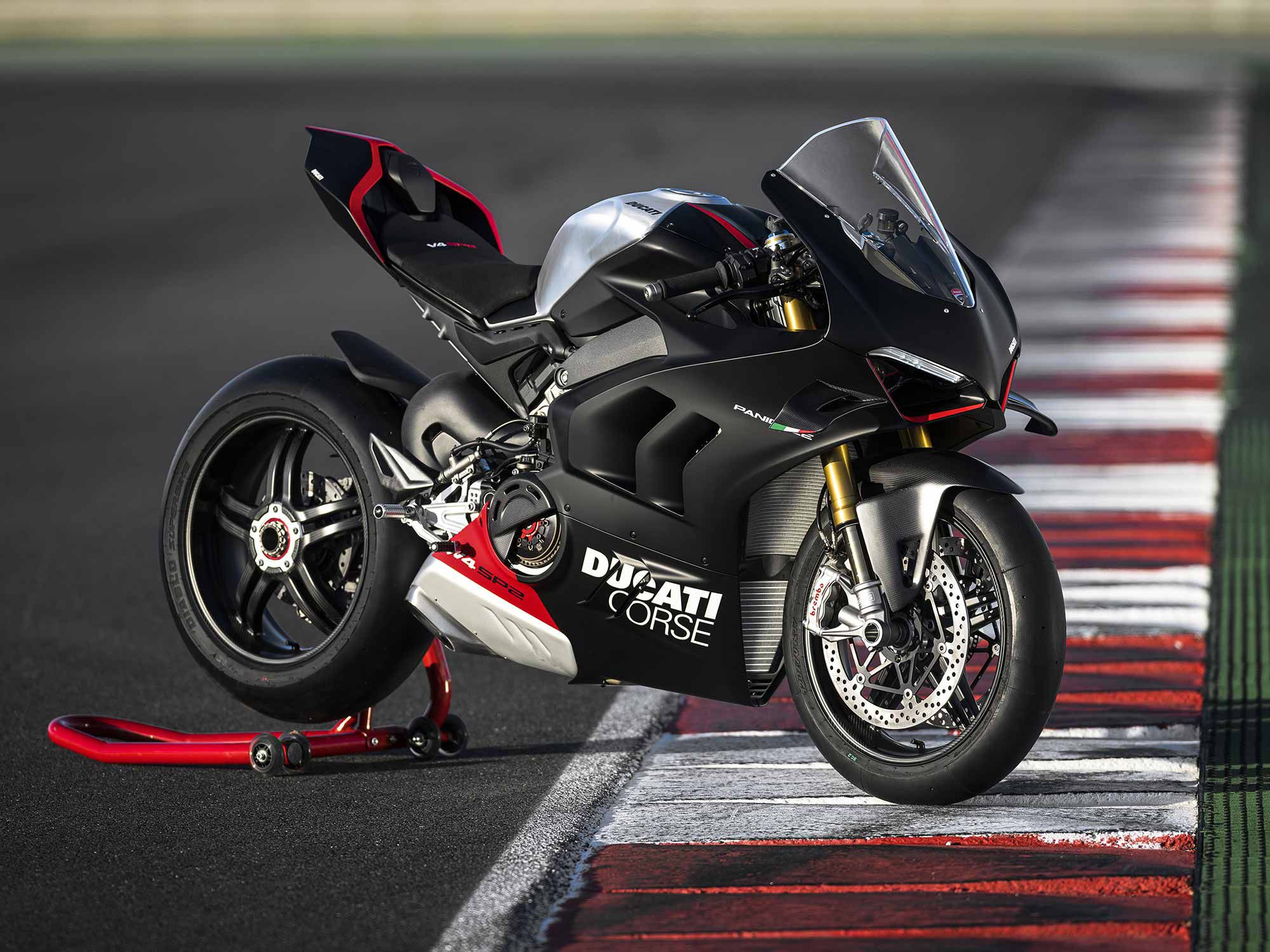
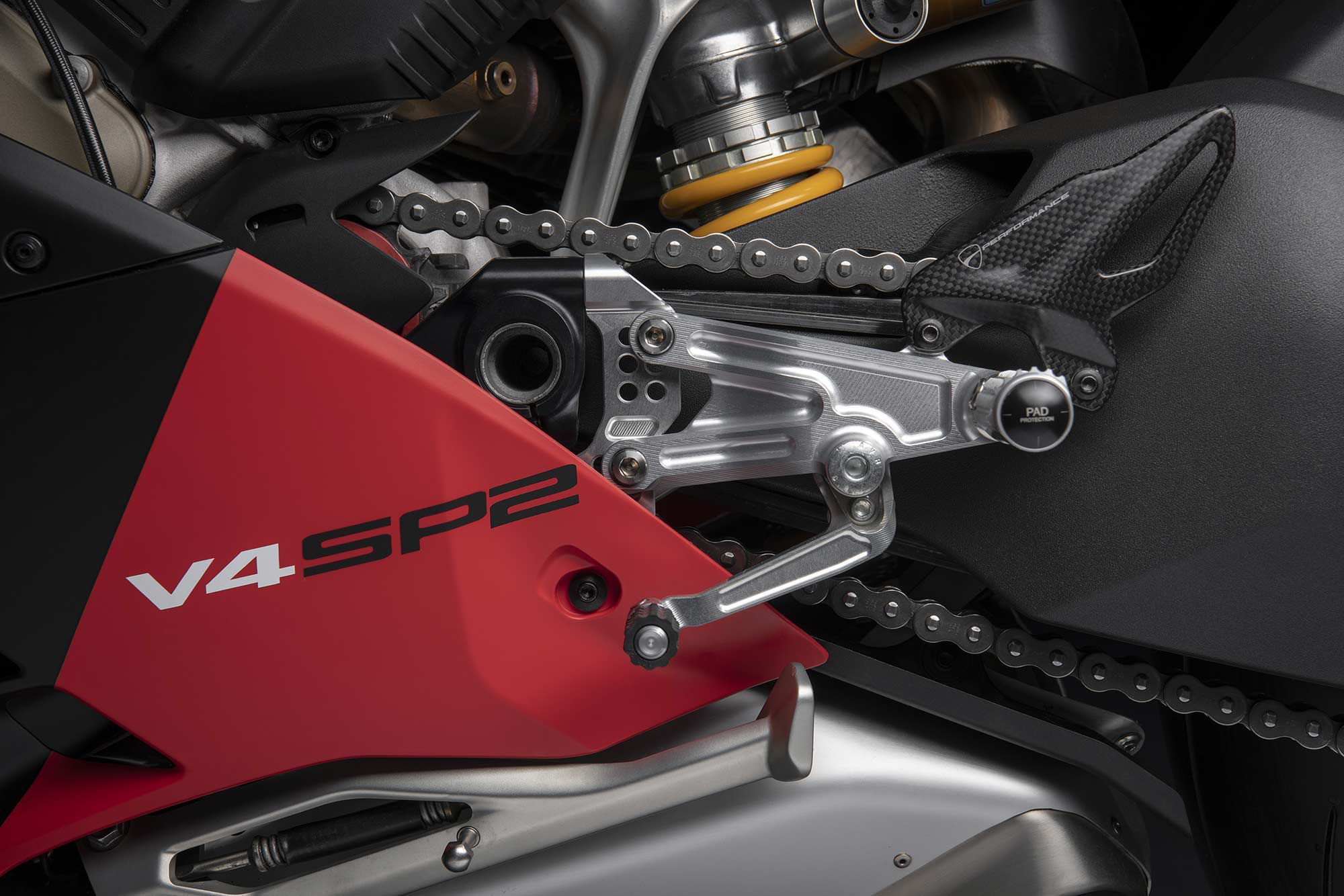
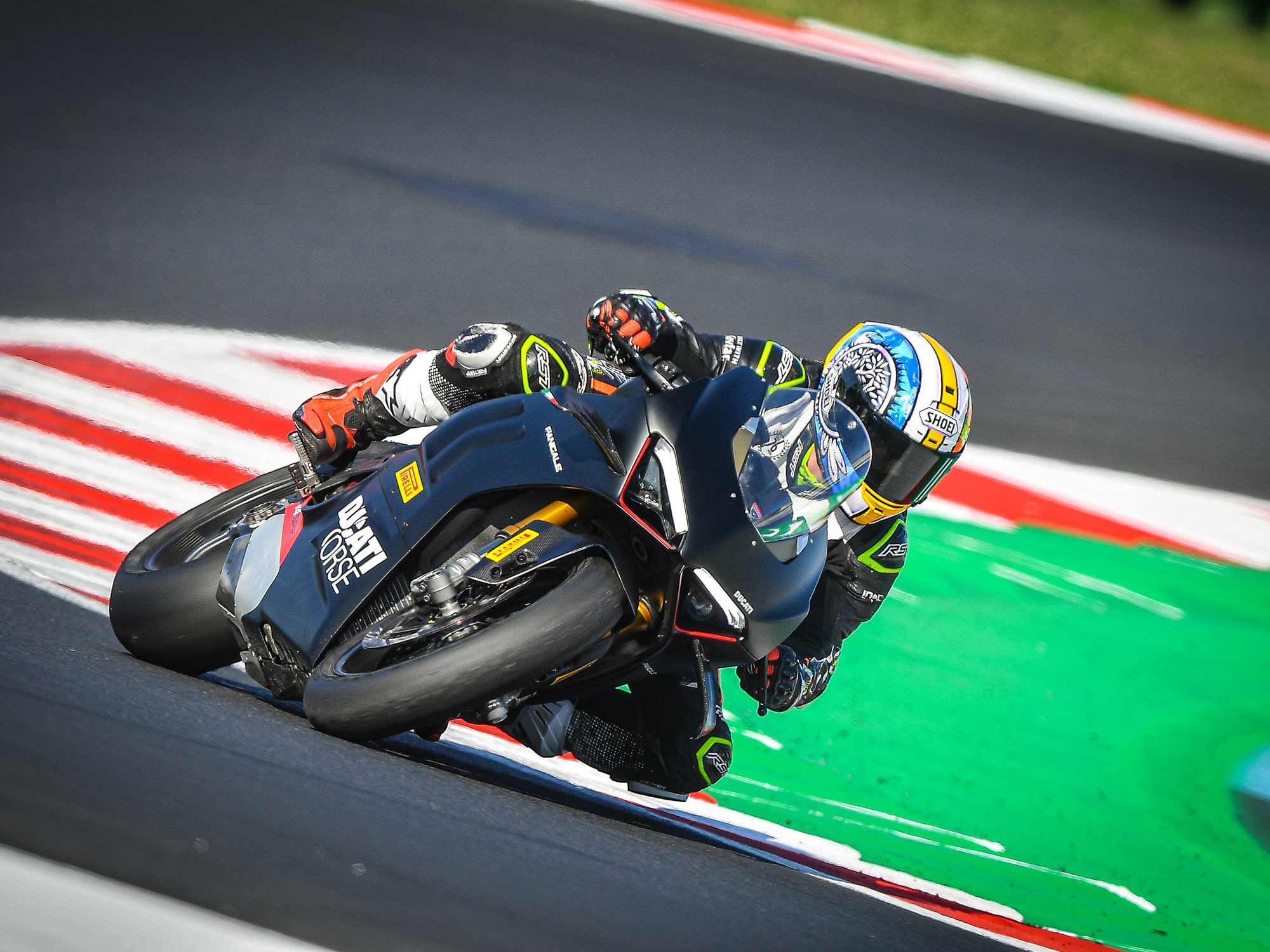
Source: MotorCyclistOnline.com
